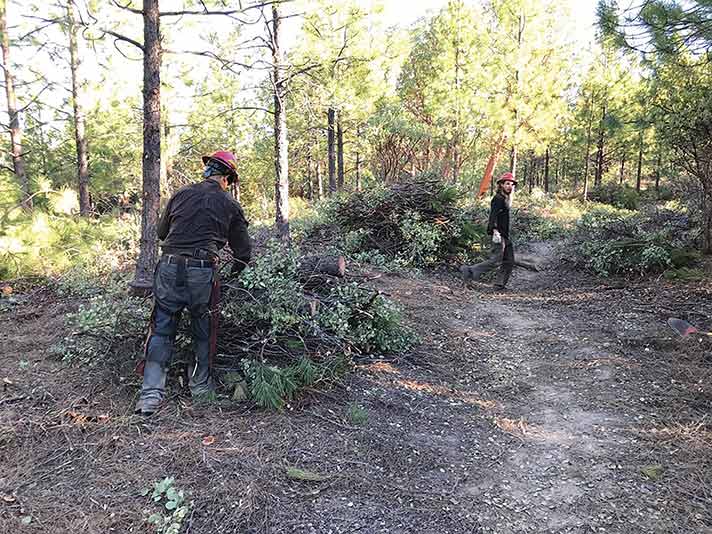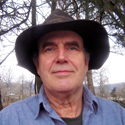Trail Talk – April 2024
“THE ONE WHO PLANTS TREES, knowing he will never sit in their shade, has begun to understand the meaning of life.” (author unknown) We take this to heart because of recent feedback about fuels reduction on city-owned land. Some concerns that were raised include the spread of invasive weeds, potential erosion, destruction of wildlife habitat, and a loss of recreational values. Being more knowledgeable about the situation in Forest Park, we’ll focus on the work there.
Only the extreme southern end of the contract area is rife with invasive weeds, these being the grasses known as cheat grass and medusa head, as well as the small burs associated with invasive “baby’s breath.” These weeds are common in the open oak savanna on the steep hillsides above Reservoir Rd. Further spread of these plants due to contract work has been limited simply because there has been no vehicular access. Existing trails have been the routes traveled by work crews.
The highest potential for erosion has been in the Knobcone Pine/Pipsissewa Trail area because of the decomposed granitic soils. Brush has been placed into exposed gullies and trail grades have been adjusted to compensate for this increased potential. When pile burning occurs this fall, a few piles will be strategically left in exposed areas. Currently no erosion from any of the fuel reduction work has impacted surface water in the watershed. With the continued exclusion of mountain bikes on the exposed hillsides, and with conscientious hikers maintaining travel on existing trails, future erosion should be negligible.
One large manzanita “jungle” was eliminated to create a continuous buffer along the edge of Forest Park nearest Jacksonville. Pile burning will be completed outside of nesting season and a few piles will be left for habitat needs along with a few snags. Removal of manzanita monoculture should allow oaks, pine, and madrone to reclaim more of the hillsides, returning them to the dominant forests of the area pre-Euro-American culture. Observant hikers will still see sign of bear, deer, coyote, fox, squirrel, cougar, and other mammals throughout the contract areas.
Recreational values are in the eye of the beholder. An open forest is more in line with historical records from the Skene Ogden expedition of the 1820s. More open hillsides provide hikers with improved views to the south and west. Hiking trails and viewpoint benches remain intact.
Folks we’ve met hiking in the park are mostly supportive of the work, and if they have had questions, have seemed pleased with the explanation of what is occurring. When we ask ourselves what the park would look like after a catastrophic wildfire like the one in the 1950s, we can understand the need for this type of intervention. Contract crews from Grayback Forestry are highly professional and have an extensive background in this type of work.
So, get out and hike. And while you’re at it, tip your cap to our Forest Park Volunteers who’ve worked so hard through the winter keeping your trails maintained and accessible.

 Trail Talk is a monthly column by Clayton Gillette about hiking the Jacksonville Woodlands trail system. For more information, please visit the Jacksonville Woodlands Association website at
Trail Talk is a monthly column by Clayton Gillette about hiking the Jacksonville Woodlands trail system. For more information, please visit the Jacksonville Woodlands Association website at